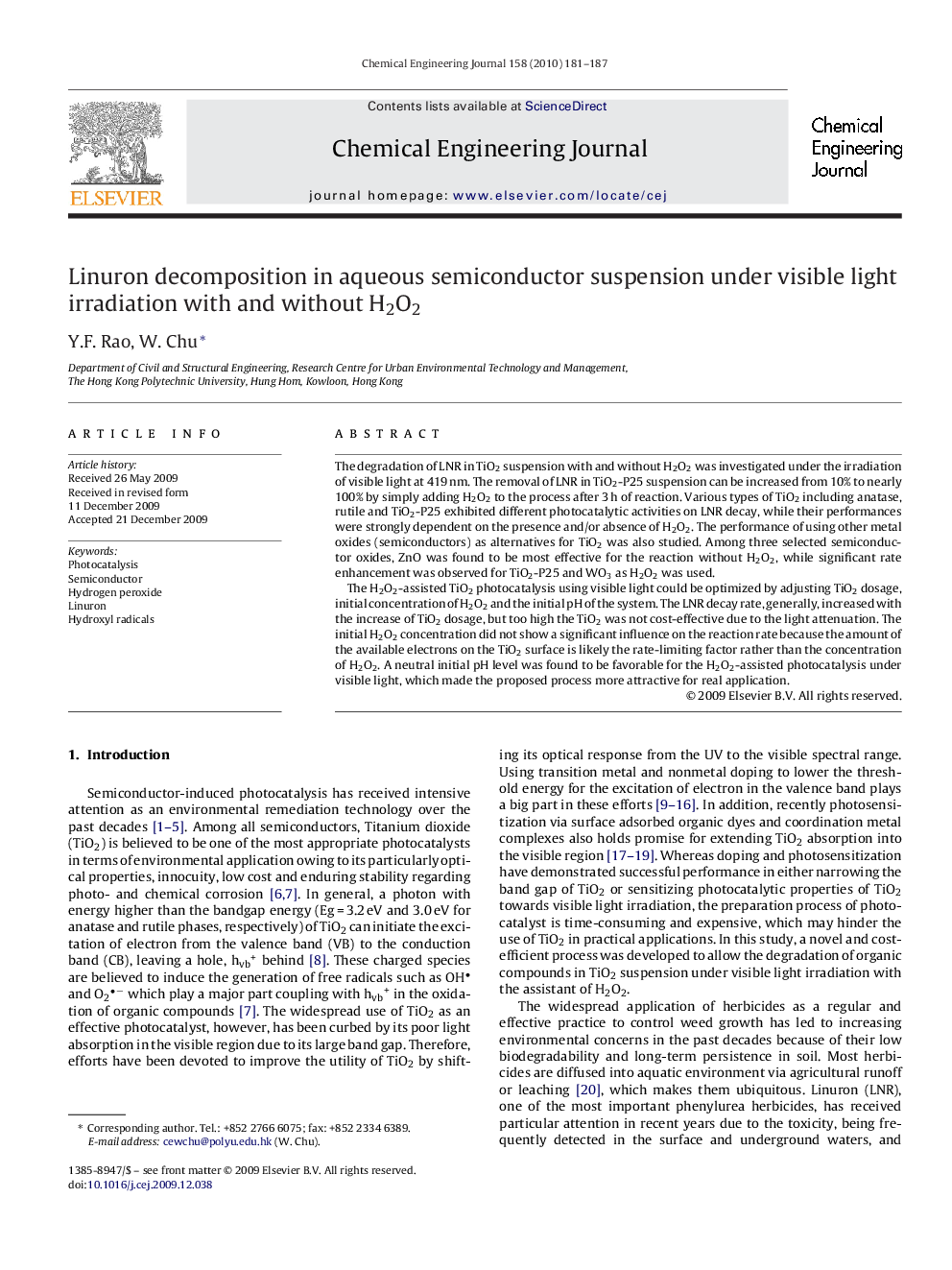| Article ID | Journal | Published Year | Pages | File Type |
|---|---|---|---|---|
| 152088 | Chemical Engineering Journal | 2010 | 7 Pages |
The degradation of LNR in TiO2 suspension with and without H2O2 was investigated under the irradiation of visible light at 419 nm. The removal of LNR in TiO2-P25 suspension can be increased from 10% to nearly 100% by simply adding H2O2 to the process after 3 h of reaction. Various types of TiO2 including anatase, rutile and TiO2-P25 exhibited different photocatalytic activities on LNR decay, while their performances were strongly dependent on the presence and/or absence of H2O2. The performance of using other metal oxides (semiconductors) as alternatives for TiO2 was also studied. Among three selected semiconductor oxides, ZnO was found to be most effective for the reaction without H2O2, while significant rate enhancement was observed for TiO2-P25 and WO3 as H2O2 was used.The H2O2-assisted TiO2 photocatalysis using visible light could be optimized by adjusting TiO2 dosage, initial concentration of H2O2 and the initial pH of the system. The LNR decay rate, generally, increased with the increase of TiO2 dosage, but too high the TiO2 was not cost-effective due to the light attenuation. The initial H2O2 concentration did not show a significant influence on the reaction rate because the amount of the available electrons on the TiO2 surface is likely the rate-limiting factor rather than the concentration of H2O2. A neutral initial pH level was found to be favorable for the H2O2-assisted photocatalysis under visible light, which made the proposed process more attractive for real application.
